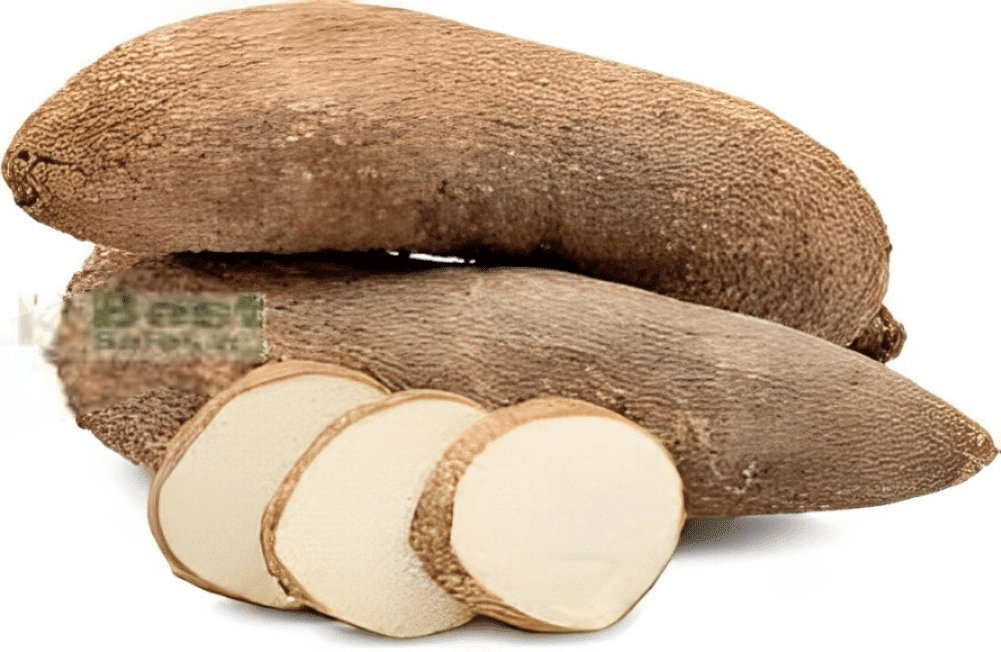
Yam Cultivation Mastery: A Guide to Maximizing Quality and Efficiency
Unlock the secrets of bountiful yam harvests! Yam Cultivation Mastery: A Guide to Maximizing Quality and Efficiency empowers you with expert tips and proven techniques to maximize quality, efficiency, and yields. Grow delicious, healthy yams like a pro!

YAMS (Dioscorea spp.)
Local Names. Yor.-Ishu; Ibo-Ji; Hausa-Doya.
General. Yams require well-drained heavy loam and 40-70 inches of rainfall (of which 35 inches should fall before July) and grow best in good riverain soils of Onitsha, Ogoja, and Benin Provinces. Widely grown in the south and middle belt and formerly the main foodstuff of these areas, they are grown as far north as Zaria. The crop is decreasing in importance due to high labor requirements, need for good soil, shortage of stakes, and high transport costs, and cassava appears to be taking its place to some extent.
Varieties. The main species are:
White Yam (D. rotundata), with the most numerous varieties, is the most popular and the best keepers. Early maturing varieties, e.g. Yor.-Iyawo; Ibo-Ji ocha, and Ji aga, usually yield less than later maturing yellow varieties.
Water Yam (D. alata), Yor.-Ewura; Ibo-Ji abana, is early maturing and not very popular but a few are grown for early consumption. It may be used for supplying white yams in March-May.
Yellow Yam (D. cayanensis), Yor.-Alo; Ibo-Ji oko, matures late. Minor species are:
Trifoliate Yam (D. dumetorum), Yor.-Esuru; Ibo-Ona. It is not popular and is eaten boiled only.
Aerial Yam (D. bulbifera) is inferior to all others.
Planting Date. Early planting is done in November while the soil is still moist and late planting in February to April for the main crop. In riverain areas planting is done as soon as
possible after the flood recedes. For seed yam production close planting in May is possible. Spread of planting date not only spreads work but permits maximum use of high-yielding “tops”, the bottoms of each tuber being eaten and tops planted.
Spacing. 8-16 sq. ft. is required per stand; 4-6 sq. ft. for seed production. Generally, closer spacing gives higher yields per acre but smaller tubers and a lower multiplication rate. The latter is important owing to the high cost of seed. Smaller sets usually get closer spacing.
Seed Rate. 1-2 tons per acre is required for planting depending on the size of the setts and spacing.
Setts. It is extremely important to select only sound tubers, especially for November planting. Poor selection may mean losses of up to 100 percent before the rains start. Shoots are rubbed off before planting. Whole tubers are the best planting material, but large ones may be cut into pieces for the economy. Pieces should be not less than 8 oz. and, for prize yams, up to 24 oz. For seed production 3-6 oz. setts are used. Tops (with buds) are better than bottoms or middles (without buds) and the spread of planting date permits greater use of tops. It is advisable to plant whole tubers and early maturing tops separately from bottoms and middles. Setts are usually cut one or two days before planting and cut surfaces are left to dry. But there is some evidence that cutting and planting immediately afterward is better. Bruising of the setts should be avoided.
Preparation of Ground. Farmers usually plant in newly cleared soil in mounds or hills and less often in ridges. In the free-draining sandy soils of Benin and eastern areas, yams may be planted in holes on the flat. Conversely, in poorly drained, especially riverain soils, hills 6-8 ft. in diameter and 2-3 ft. high may be made with up to 6 setts in each. Generally, upland yams are planted in heaps 24-3 ft. in diameter, 9-12 ins. high, with centers about 4 ft. x 4 ft. and with one sett per heap. The Agricultural Department plants on ridges that are more suited to rotational cultivation, to control erosion, and to cattle or tractor cultivation. Such ridges should be tied by cross-bars every 34 to 11 yds., or be normally 3.4 ft. apart.
Planting Method. Holes 6 ins. deep are dug in the tops of the heaps or ridges. One set is placed in each hole usually with the cut surface upwards and sloping at 45 degrees. The sett is now covered with not less than 3 ins. and not more than 6 ins. of soil. On sunny days it is best to stop work by 10 a.m. and it is essential not to place sett in a sunbaked hole or to cover it with hot soil. Planting and covering gangs should follow the holing gang as soon as possible.
Mulching. Covering the hidden sett with a cap of grass or leaves is essential for yams planted before the rains start and is desirable for all yams. Continuous mulching of the entire ridge top is better than capping. Mulch is usually weighted down with a hoeful of soil. The benefit is probably due to a reduction in soil temperature in the region of the sett.
Germination. Germination starts in 20-60 days depending on whether rain falls, but may take longer for November bottoms and middles.
Supplying. Supplying is rarely done owing to the risk of damaging later germinating setts. It can be done for November yams if whole tubers and tops are planted separately from middles and bottoms. It is advisable to supply with a quick-growing yam, e.g. water yam.
Fertilizers. On the poorer soils and in the higher rainfall areas considerable increases in yields can be obtained by fertilizer applications. Nitrogen and phosphorus are the most important nutrients, though lime may be important where soil pH is less than 5.9. Potash is generally not so important for yams as it is for the cassava which follows it in rotation. Some potash should however be included in the mixture.
Fertilizers should be applied about six weeks after planting (when perhaps 75 percent of all yams have germinated) in a ring around the plant and lightly mixed with the soil.
A useful general mixture is equal parts sulfate of ammonia, single superphosphate, and sulfate of potash applied at 2 cwts. per acre. Alternatively a dressing of 300 lbs. per acre of a 10.10.20 compound fertiliser.
Staking. Staking is essential for good yields. Live bush sticks are often left as stakes when clearing the bush. Cut Cassia or Leucaena glauca stakes may be used. In heavily manufactured areas bamboos up to 12 ft. long may be used but usually 6-8 ft. is long enough. One stake per sett is normally required, and two, three or four are tied together at the top for mutual support. About an acre of Cassia siamea at 6 x 6 ft. will supply enough stakes annually for an acre of yams. In northern Oyo and in Ilorin Provinces where stakes are not available, most yams are planted in ridges carrying maturing guinea corn. When the guinea corn is being harvested the heads are cut off and the stalks bent over at about 2 ft. 6 ins. high and woven together to form a fence up which the yam vines are trained.
Training. The vines must be trained up the stakes.
Intercropping. Yams are usually intercropped with okra, melon, peppers, Telfairia, and other minor crops, often with early maize and less often with cassava.
Maturation. 8-10 months. In some areas, tubers are carefully unearthed at 6 months and the bulk of each tuber is cut off for eating, the top being left attached to the plant. The top is covered up again and grows into an irregularly shaped seed-yam which may eventually be divisible into two or more sets.
Harvest. The early crop matures at the end of July to mid-September, and the main crop is from mid-October to January. Vines die down and tubers are dug up carefully and carried to a previously prepared yam barn or store, where they are graded by size, etc., and tied up, usually on vertical poles in double rows under tree shade. One ton of yams needs 76 poles 7 ft. high requiring 19 ft. if placed 6 ins. apart in a double row. There is an increasing tendency to sell yams in the ground to contractors who harvest and transport them by lorry to the cities.
Storage. The tubers are inspected frequently for signs of decay.
Yield. 2-7 tons per acre. Seed yams 1-2½ tons per acre. Labour. Hand cultivation, 150-240 man-days per acre.
Diseases and Pests.
Eelworm (Anguillulina bradys) causes rotting of the yam tubers in the ground and the store. The tissue goes brown and soft. It is best to avoid frequent planting of yams on the same ground and destroy all infected material. Burning of green covers before cultivation for planting is thought to reduce infestation. The use of clean planting setts is most important.
Yam Beetle (Heteroligus meles). This is a large beetle the larvae of which damage the yam tubers. Control is difficult but rotation of crops and late planting is thought to reduce the infestation. Dusting of the planting setts with 24 percent Aldrin dust or 0-5 percent of Gamma B.H.C. dust is usually a satisfactory control measure. The setts are dipped in the dust and the excess is then shaken off.
Yam Shoot Beetle (Crioceris livida). The larvae of this beetle are found attacking the young leaves and tender shoots. They are surrounded by a film of frothy slime. Generally, no control is attempted as heavy rain washes the larvae down. In dry weather, the larvae may be hand-picked. If a serious attack develops dusting or spraying is effective. The use of Agrocide 3 powder has shown success where the pest is seen.
Virus Disease. A virus disease causes mottling and distortion of the leaves and proliferation of the axillary buds. There is a considerable reduction in yield.
Yam Cultivation Mastery: A Guide to Maximizing Quality and Efficiency
FAQ and Answers for Yam Cultivation Post:
General:
- What are the main reasons for the decline in yam cultivation?
- High labor requirements and need for good soil.
- Shortage of stakes and high transport costs.
- Cassava becoming a more popular alternative.
- Where are yams primarily grown in Nigeria?
- South and middle belt, formerly as far north as Zaria.
- What are the main yam varieties grown in Nigeria?
- White Yam (D. rotundata), Water Yam (D. alata), Yellow Yam (D. cayanensis), Trifoliate Yam (D. dumetorum), and Aerial Yam (D. bulbifera).
Planting and Growing:
- What is the best time to plant yams?
- Early planting in November and late planting in February to April for the main crop.
- What is the ideal spacing for yam plants?
- 8-16 sq. ft. per stand, with closer spacing resulting in smaller tubers and a lower multiplication rate.
- What type of seed yam should I use?
- Whole tubers are best, but large ones can be cut into pieces. Smaller sets get closer spacing.
- Do I need to stake my yam plants?
- Yes, staking is essential for good yields. Use live bush sticks, cut Cassia or Leucaena glauca stakes, or bamboo.
- Can I intercrop yams with other crops?
- Yes, yams are commonly intercropped with okra, melon, peppers, Telfairia, early maize, and sometimes cassava.
Harvesting and Storage:
- When are yams typically harvested?
- Early crop: July to mid-September
- Main crop: mid-October to January
- How should I store yams?
- In a yam barn or store, graded by size and tied up on vertical poles under tree shade. Inspect frequently for signs of decay.
Pests and Diseases:
- What are the main pests and diseases affecting yams in Nigeria?
- Eelworm (Anguillulina bradys) causes rotting.
- Yam Beetle (Heteroligus meles) damages tubers.
- Yam Shoot Beetle (Crioceris livida) attacks young leaves and shoots.
- Virus disease causes leaf mottling and distortion.
- How can I control these pests and diseases?
- Crop rotation, late planting, and clean planting setts are important.
- Insecticides like Aldrin dust or Gamma B.H.C. dust can be used for specific pests.

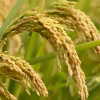
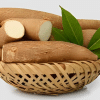
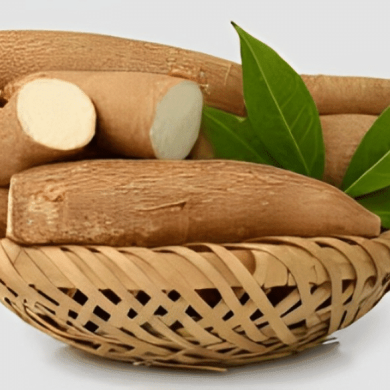
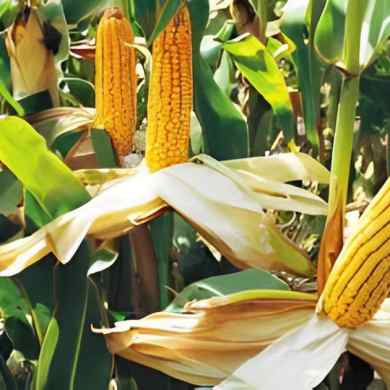
Add comment
You must be logged in to post a comment.